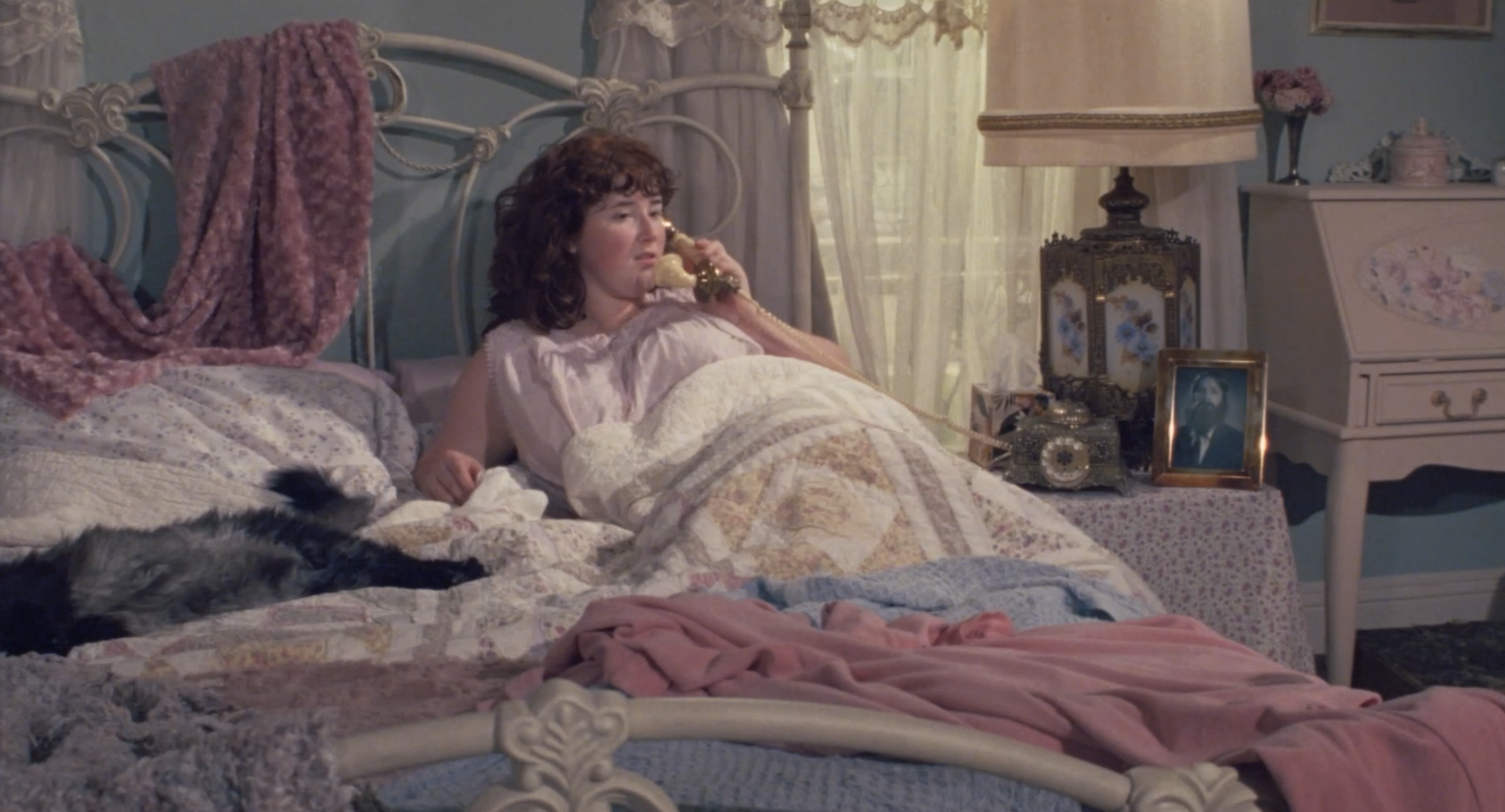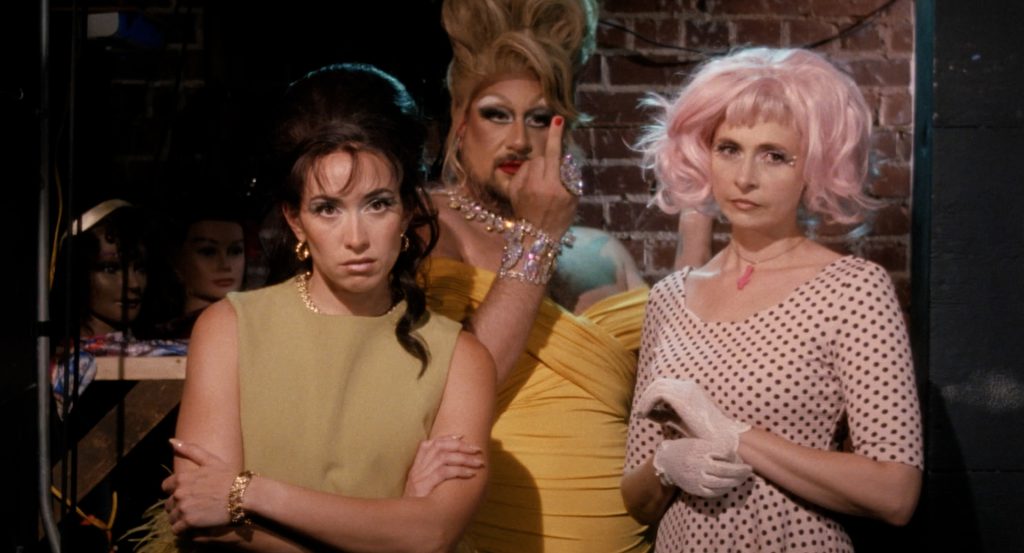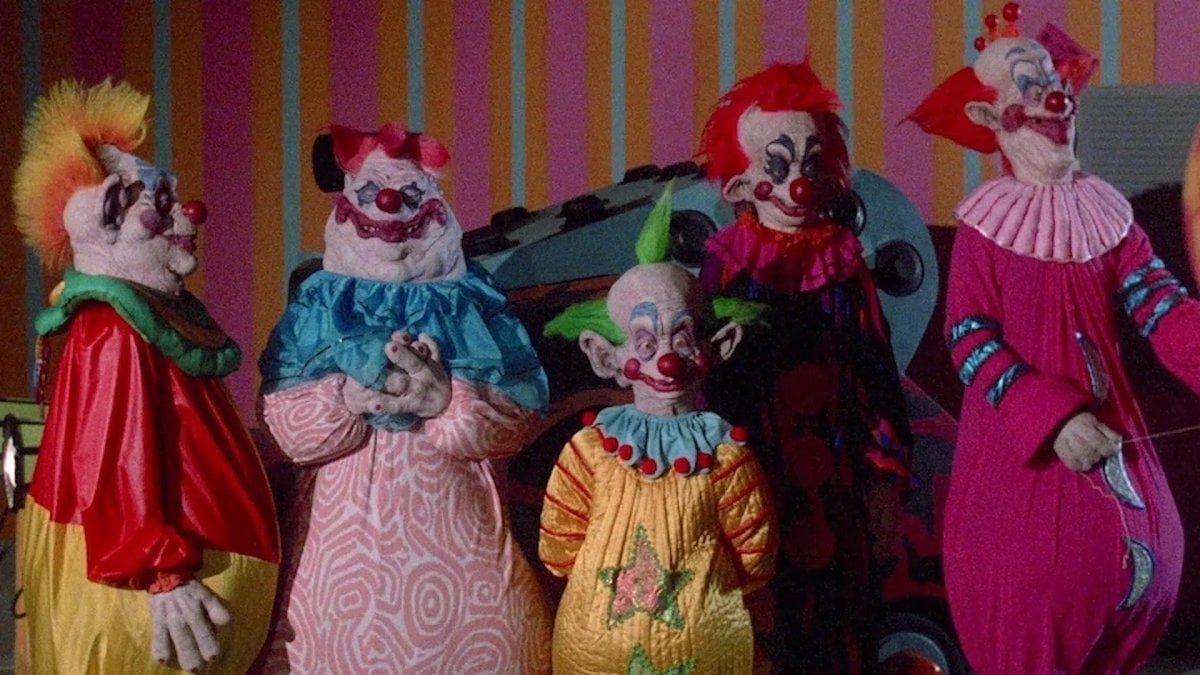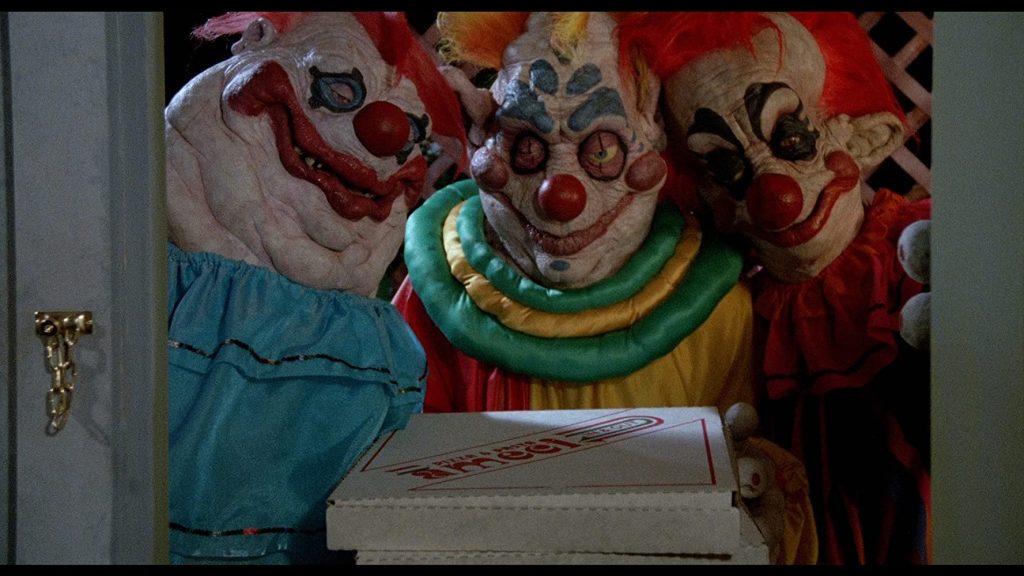Misc
Why Do We Giggle At The Ghastly?

While doing my part in celebrating everyone’s favorite fear-fueled season, I stumbled across another gem from Joko Anwar’s catalog. The religious horror movie Grave Torture, which mostly had me silent and holding my breath due to the scares, but there was one scene in particular that had me cracking up with laughter. A woman somehow gets her hair caught in a dryer then turns it on and goes for a spin. I don’t want to spoil things, but let’s say she ends up losing more than her hair, and it gets gory. As soon as the scene finished I couldn’t stop laughing. I ended up posting a clip of my reaction and a bunch of friends shared the same sentiment. What was so funny about this woman losing her life this way? Did that make us Dexter Morgan Reincarnated for finding it funny, especially when this wasn’t a comedic film?
It’s Okay To Have Fun
We’ve all heard that Horror and Comedy hit similar beats when it comes to getting a reaction out of the audience. When Art The Clown gets his head chopped off or is the one doing the chopping, we laugh because the character is having fun, which also puts us in a silly mood. The more outrageous the scenario, the better the chance we have to laugh at it. Yes, the victims on screen are screaming bloody murder, and there’s more blood on the floor than your half-used bottle of Clorox in the closet can handle, but the killer is enjoying every second, reminiscent of a kid let loose in a Toys “R” Us on their birthday. You’re told not to enjoy the suffering of others, but when it’s on screen and the killer has charm, it’s hard not to partake. The Dream Demon himself, Freddy Krueger, sets the tone in all of his nightmares that it’s okay to chuckle at the macabre you see, and if you try to resist, he’ll throw in a few jokes to bring it out of you. When the audience is given permission to let go, we get to see what raw reactions come up. It’s the same reason if you catch a Child’s Play film in theaters, there are more laughs at the actual kills than there are the jokes. Pointing at the absurdness of a doll choking a 200lb man to death and dragging his body away so no one sees the crime scene is normal. Of course, if this happened in real life, it’d be horrific, but from the safety of your recliner, it’s peak comedy because if that were you….you could take him, right?
Audience’s Expectations Of Characters
We see so many scenarios in film where people make what we would deem stupid and costly mistakes, and there’s something about being vocal about it in a theater full of people. I remember watching 2004’s Dawn Of The Dead for the first time, ready to be terrified. To my surprise a good 60% of the movie had the audience roaring, laughing and vocally judging the characters. So many were yelling comically what they would do if their zombie spouse were on their tail. None of us can truly know unless put in that situation, but it doesn’t stop us from feeling that way, which adds a comedic aspect to it because the mousiest of us can pretend we’re lions in the description of our path. Yelling at the screen for the character to run faster, only for them to trip 5 seconds later and get hacked to death, makes for a hilarious time whether you’ve been drinking or not. With a group of friends telling the character not to drink that, and they drink it anyway, only to fall victim to an acid death where their throat falls out of their neck is a riot, especially depending on the props used.

The Lower The Budget The Funnier The Scene
Going to Blockbuster and taking chances on the independent films of the early 2000s was a damn good time with my dad. We’d pick out the worst movie covers possible and give them a try. Whenever a gunshot would be dubbed over and replaced with someone clapping their hands or someone’s obviously mannequin leg was thrown across the screen while the victim was screaming in pain had us rolling everytime. I think it’s because we recognize that the folks behind the scenes were having fun and we can laugh along with them. Mimicking how we think the conversations behind the scenes might have gone when in production was part of the fun. Not to make fun of their efforts but to cheer on their passion in hopes that we get more in the not so distant future. One of my favorite films, The Evil Dead, has demons that ooze what looks like colored oatmeal in some scenes, which cracks me up, getting a reaction every time I show it to someone new.
Acting Out
Most of the time, when watching someone get mutilated, we may feel sympathy or fear for who may be next. The series From did a great job of this for their season 3 opener and had everybody in a chokehold for a couple of weeks over the aftermath. It’s the actor’s job to convey what the character is feeling on screen in the best way they know, even if it means sewing your nose back on after a psycho clown chops it off with a machete. Sometimes that isn’t always the case though, and you may have someone who can’t emote in any way other than comedy, which causes the audience to laugh. If I don’t believe your face when the werewolf is tearing your stomach open for his next meal, and you’re screaming like the love of your life just cheated on you in an episode of Days Of Our Lives, then I’m gonna chuckle all the way through. It’s why Scream Queens throughout history get their names respected forever in cinema because they sold it to us.
Embracing The Fear
Many of us don’t know how to process fear in the moment so it may come out as laughter. If a fuse blows out and I’m fumbling in the dark to get it back on, I start sweating. To cure that fear, I joke to the possible spirits accompanying me on my journey, hoping that my humor may save me from being pushed into the pits of hell. Others may not want to admit when something makes them nervous especially when on screen so to laugh and make fun is the next best option. The next time you’re laughing at a scary movie hit the pause button for a few seconds and ask yourself if what you saw was truly funny….or are you just too afraid to feel the fear?
Misc
[INTERVIEW] Musings on Monstrous Menstruation with the Cast and Crew of ‘The Cramps: A Period Piece’

Periods suck. Everyone who menstruates will tell you that, yet this annoying, often painful thing that happens to our bodies for one week out of every month for most of our lives is conspicuously absent from most media. When periods do crop up in horror movies in particular, they tend to be linked to the downfall of the person experiencing them. Writer-director Brooke H. Cellars’ movie The Cramps: A Period Piece is the rare exception.
Inspired by the filmmaker’s own struggles with endometriosis, an underdiagnosed condition that leads to immensely painful periods, The Cramps follows Agnes (newcomer Lauren Kitchen), whose period cramps manifest in strange and monstrous ways. But, crucially, Agnes Applewhite herself is never framed as a monster, just a shy young woman trying to escape her repressive family life and find her place in the world. She gets one step closer after accepting a job offer to be the shampoo girl at a local salon run by Laverne Lancaster (drag queen Martini Bear) and staffed by kooky characters like the prudish Satanist Teddy Teaberry (Wicken Taylor) and the ditzy Christian Holiday Hitchcocker (Michelle Malentina). All the while, Agnes’ cramps are wreaking havoc on the rude men and dismissive doctors that she encounters.
A spiritual successor to the kind of movies John Waters was putting out in the 1970s, The Cramps: A Period Piece is equal parts funny, campy, and heartfelt, bolstered by fun practical effects that horror fans will love. I sat down with Cellars, Kitchen, and Taylor to chat about the future cult classic after its Fantastic Fest 2025 debut.
The following interview has been lightly edited for clarity and conciseness.
An Interview with Director Brooke H. Cellars and Actors Lauren Kitchen and Wicken Taylor of The Cramps: A Period Piece
Samantha McLaren: Brooke, this film is inspired by your own journey with endometriosis. How do you find the humor in what was presumably a difficult situation over many years?
Brooke H. Cellars: Being suppressed and growing up with no friends, I had to figure out my own way in life. And when people would make fun of me, I kind of had to develop a thicker skin through humor. That was the only way I could get through—by making light of things, or trying to make people laugh, being the weirdo, saying stupid things. That’s how I connected with people, just being ridiculous with each other. And it grew to where I actually had a sense of humor.
I guess that’s kind of like a mask in dealing with what’s actually going on, my family life or being in pain… So when I wrote the story, it came naturally. I didn’t want to make it scary, because it’s scary in real life. I wanted something entertaining but meaningful, and to connect with people in a way where they can be outspoken and it’s okay. I want it to be cathartic for them, and to maybe make them forget for a little while, but also feel a place of warmth in a horror movie where they least expect something.
It’s so rare to see any horror film about periods, but especially one that isn’t about the abjection of periods. I’m curious how you approached making it funny but not at the expense of people who menstruate, while also finding the horror and making it a positive, uplifting story.
BHC: When I started making short films, I just wanted to make a slasher, because I love old, 1970s slashers. So when we made [“The Chills,” Cellars’ first short from 2019] for no money in my house with my husband and his sisters, who are not actors, I knew I wanted to make scary stuff, but I didn’t know I wanted to say something else. It does say something, but I didn’t do that intentionally—I was just trying to make a scary movie, but it’s like something was trying to come out of me.
It came out when we finally made Violet Butterfield: Makeup Artist for the Dead (2022), which is kind of set in the same world as The Cramps. We shot it on film and kind of developed the world, and just put more intention into it and more of myself, my story, and being finally honest about what’s going on. At the same time, I had stopped talking to my family. I was finally living my life in my late 30s and got into filmmaking, as I’d wanted since I was a kid and never thought would happen. I just said, fuck it—this is what I’ve always wanted to do, I’m running with it, and I’m doing what I want now. I knew the story I wanted to tell, because I was still going through it while I was writing the script. I was having my hysterectomy. Finally, somebody was helping me with my endometriosis, after like 15,000 doctors told me “sorry.”
Lauren, this is your first role—how did you come to be involved in the project, and what drew you to the script?
Lauren Kitchen: I knew Holiday, played by Michelle [Malentina], and I knew Pussy D’Lish [Jude Ducet], who played Clydia. We had just done a community theater production of Rent together. And I followed Brooke… I was a fan of “Violet Butterfield” and the whole aesthetic, so I wanted to follow up on their Instagram. And then I saw an audition announcement for The Cramps, and I just loved it—it had the sixties florals, so cute. I’ve always been told I’m like an old soul, so I was like, I should go for it.
I remember saying to Jude that I really relate to the main character, but I probably won’t get it, I don’t have the experience. I went into in-person auditions fully thinking, “I’m not gonna get it, but at least I’ll give myself a pat on the back for doing it.” And it turns out, when you go in thinking you won’t get it, you get it!
Wicken Taylor: She killed.
LK: Everyone was so supportive, and having done stage acting and studying it in school helped to bridge the gap between stage and film. There are times when you have to make adjustments. I love the subtleties of film. On stage, you’re acting for the back row, but then in film, you can do something as subtle as an eye movement that you can say so much.
You being new to film brought something so interesting to the role, because there’s that vulnerability—you’re finding your confidence in a way that mirrors Agnes’ journey.
LK: Agnes is finding herself and her chosen family, and I’m also finding Lauren and my confidence through it.
There are so many references and visual homages in the film—obviously John Waters, but also The Tingler, and so many films that I grew up loving. I’m curious if Brooke gave you all homework to watch?
LK: I watched Peeping Tom.
WK: And The Red Shoes. Blood and Black Lace. And she had me watch [The Jerk] because Bernadette Peters was an inspiration for Teddy, and then also Grease for Frenchy.
LK: Female Trouble. And I watched Cry-Baby too for Johnny Depp.

One thing that drew me to The Cramps is that there’s so much drag talent in the film—drag kings as well as queens, and bearded queens, which you don’t often see. It was subversive when John Waters featured drag performers in his films in the 1970s, and it has somehow looped back around to being subversive again. Brooke, how important was it for you to have that queer element in this story?
BHC: Very important. My own family never accepted me for anything, and that’s why things were so confusing. I always thought I had a normal family, and I definitely didn’t have a normal family. They treated me as if I wasn’t normal. Of course, I wasn’t, but it was okay—I just didn’t know it was okay to be who I was. I didn’t have a lot of friends, and even my brothers and sisters bullied me; my parents bullied me. I was bullied till I was a senior, and even when I was an adult.
Nobody was embracing me. I came from a very small conservative town and a conservative family, so I was always ashamed to be me, even though I couldn’t stop being me. […] It was when I moved away from home to the “big city” of Lafayette, Louisiana [laughs], I started waiting tables and stuff, just doing my own thing, and it was the queer community that I was always told “don’t talk to those people”… these are the people that told me it’s okay to be me. They had so much confidence that I wanted to have. They accepted me, they supported me. They made it so comfortable to just be myself. […] I think a chosen family is very important, and I wanted to celebrate them along with what I’m going through. They’re a part of me.
The hair salon feels like the perfect encapsulation of that chosen family, full of weirdos who found each other. Speaking of, I want to talk about Teddy, because I’m obsessed with Teddy. Wicken, how did you find the right tone for that character who is the perfect subversion of the typical church lady, but also so deadpan, and so kind?
WT: Brooke writes amazing characters. I was like, what do you mean? And she said, “darkness is goodness.” So I took that away and I interviewed a Satanist, and I was doing research, but because this is not our world, it’s a fantastical world that Brooke created, I had so much freedom. So, what is Satanism to Teddy? And what I love so much about her is that we can see that she’s a good person—it just kind of radiates from her. She embodies the idea that it’s okay to be you, that you are loved, and that you are one of us, and that you are safe.
One of my most favorite things about the relationships in the film is that Holiday and Teddy are best friends. Holiday is a Christian—a cursing Christian—and Teddy is a prude Satanist, and they’re best friends.
How did you build the aesthetic for the film? It picks and chooses from a lot of different decades, but still feels like a cohesive pocket universe.
BHC: It’s very difficult to explain things inside my head. I’ve been working with Levi [Porter, director of photography] and Madeleine [Yawn, producer] since the beginning of time. Like, every single movie we’ve made together, and so they can decipher my language and what I mean.
But when I’m creating these worlds, I’m not very fixated on one thing, like “it has to be horror!” I wanted to really intentionally make a movie of all kinds of genres and blend them together, because they’re coming from one place, even though they’re different. I’m just giving how I view the world, and yeah I take from different decades, different movies, and they’re all the same love to me.
The Cramps: A Period Piece celebrated its world premiere at Fantastic Fest 2025. Keep an eye out for its wider release, because this is not one to miss.
Misc
John Massari’s Re-Recorded Score Revealed at Night Frights LA

Killer Klowns from Outer Space is one of horror’s most prominent, bona fide classics. But what kind of horror fan does it make me that it wasn’t until Night Frights LA that I had the chance to watch it finally? I knew a lot about this film, but my general distaste for horror comedies overrode any box I needed to check to be considered a “horror fan.” When I heard that Horror Press was sponsoring a screening of Killer Klowns at Night Frights LA with composer John Massari in attendance, I figured, what better time than now to check it out!
Falling in Love with John Massari’s Killer Klowns Soundtrack
I listened to the soundtrack on the flight out to LA, and I loved it. There’s this brilliant mixture between camp and terror that brings an uncomfortable levity to it. Seeing it finally overlaid on the film just amplified how incredible an artist John Massari truly is. Getting to hear him talk about this project was truly enlightening, both as a new fan of his and as a creative.
John stated involvement in the project came on the wings of a friend. He was bopping around between commercial projects when a friend mentioned that someone they knew (the Chiodos) was making a film. So, John sent some of his compositions as an audition and eventually was able to get a (scoreless) screening of the film at Warner Bros. Studios. Music is an integral part of film, and a part of my brain can’t even fathom watching a film without a score. But it was the scene where the tent in the forest was found that solidified John’s love for this project.
Inside the Creative Process: Scoring Killer Klowns’ Marching Scene
How exactly does a composer go about their work? For John Massari, part of Killer Klowns was with him his whole life. The scene in which the klowns are marching into town would eventually be scored with a composition he wrote when he was in high school! He wrote the composition for his band, but they deemed it too jazzy and refused to play it. It would later come to light that John was awarded the composition job from that piece alone.
Massari seems like an incredibly down-to-earth guy who knows what he wants out of life. That part of his story really stuck with me. “Not everything you do is going to be accepted immediately by everyone. That doesn’t mean you have to discard it,” he said.

Crafting the Full Killer Klowns Score: References and Storytelling
When it finally came to creating the full composition for the film, it seems he had fairly free rein to do what he wanted. Although the Chiodos did stick their hands in the pot a few times. They made John aware of certain films they wanted him to avoid when pulling reference for his work. Some of these films, John clarified, are what we consider classics today. John’s final composition for the film tells a story of its own; rarely do you hear a score that tells its own front-to-end story. The spaceship, he said, was viewed as a princess’s castle while the klowns marching into town were meant to resemble tanks driving into Poland.
One of the most interesting stories John regaled was about a significant roadblock that occurred toward the end of production. Someone from the production side requested that John be the one to pay for the film’s Dolby Stereo licensing fee. Thankfully, John and the Chiodos shot that down quickly. You wouldn’t ask the cinematographer to pay for film processing fees, would you?
John Massari’s Enduring Pride in Killer Klowns from Outer Space
It’s clear that he has ALWAYS been proud of his work on Killer Klowns from Outer Space. Even when friends told him that maybe he shouldn’t tell people he worked on it. However, around 2010/2012, he noticed a shift in thought regarding the film. The sands shifted from viewing Killer Klowns as “so bad it’s good” (my words) to just a pretty darn good film. After finally getting to watch it, I agree.
Massari revealed something that got the entire crowd amped up…he’s re-recorded the score. COVID was a hell of a time for all of us. While most of us were drinking and playing video games, John was making art. He didn’t change the score; he just made it fuller. And he promises that the rescored composition still goes with the version of the film we’ve all seen and doesn’t change the overall tone or feeling.
New Killer Klowns Soundtrack and Screenings
Thankfully, there is a record company (not Waxwork) that is interested in releasing the new composition to the world. At some point, we can hope for a CD and a streaming release. But maybe there’s a chance for some limited screenings to pop up with the rescored composition!
Thanks to John Massari and the Night Frights crew for making this day and event happen. Watching Killer Klowns from Outer Space with John in attendance was a bucket list item I didn’t even know was on my list! Do yourself a favor, don’t waste 31 years of your life not seeing this movie. If you haven’t…do it!























